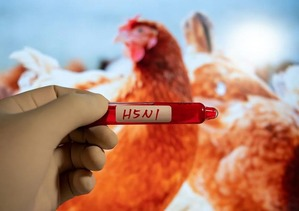Nom Penh, 24 June (IANS). The seventh case of H5N1 bird flu has been registered in Cambodia by 2025. The Health Ministry said in a statement that a 41-year-old woman from Siem Reap province of North-Western Cambodia has confirmed the H5N1 bird flu (human avian influenza), which has increased the number of cases so far to seven.
The statement released on Monday night said, “The laboratory result of the National Institute of Public Health revealed on 23 June that the woman was positive for H5N1 virus.”
According to the statement, “The patient has symptoms of fever, cough and shortness of breath and at the moment his condition is critical.”
According to the investigation, there were sick and dead chickens at the patient’s house and his neighbors’ house. The woman came in contact with sick and dead chickens five days before her ill and was cooked to eat. Health officials are investigating the source of infection and investigating any suspicious cases or people who came in contact with the victim to prevent outbreak in the community.
The statement said that the antiviral drug Tamiflu (Oseltamivir) was also given to those who had direct contact with the patient to prevent bird flu from spreading. So far this year, a total of seven human cases of H5N1 bird flu have been registered in the state, out of which five have died.
According to the report by the news agency Xinhua, according to the ministry, since 2003, there have been 79 cases of human infection from H5N1 Influenza, including 48 deaths in the South-East Asian country.
Bird flu is very less infectious (spreads from person to person), but some cases of spreading among humans have come up. In almost all cases so far, human bird flu infection is caused by exposure to infected animals. But whenever a person is infected, it is possible that the virus easily spread to other humans.
Human beings have a bird flu -infected animal’s body fluids, such as spit (saliva), milk, sneezing or stool. It can enter your eyes, nose or mouth after breathing from small particles of dust in the living space of animals or touching the body’s fluids.
-IANS
ASH/AS










